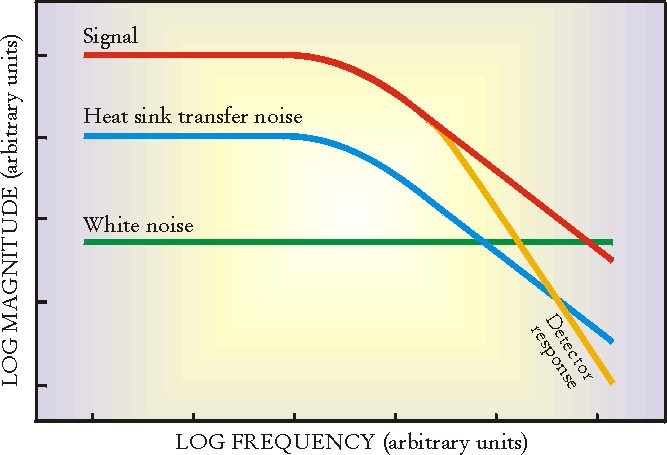 Introduction
Introduction
 Physics Today paper
Physics Today paper
 The basics
The basics
 Figure 3
Figure 3
An Instantaneous Deposition of energy into a calorimeter produces a signal pulse that decays exponentially with time constant tau. In the frequency domain, shown here, the signal (red) is roughly constant until f~1/2 pi tau, after which it falls off as 1/f. The noise due to the random transfer of energy across the link to the heat sink (blue) has the same frequency distribution as the signal. If this so-called phonon noise were the only source of noise, the signal-to-noise ratio would be frequency independent, and the measurement error could be made arbitrarily small by employing a sufficiently large bandwidth. In reality, a frequency-independent noise term (green) and the effect of a finite detector response time (orange extension from red line) reduce the signal-to-noise ratio at high frequencies, effectively limiting the usable bandwidth.
